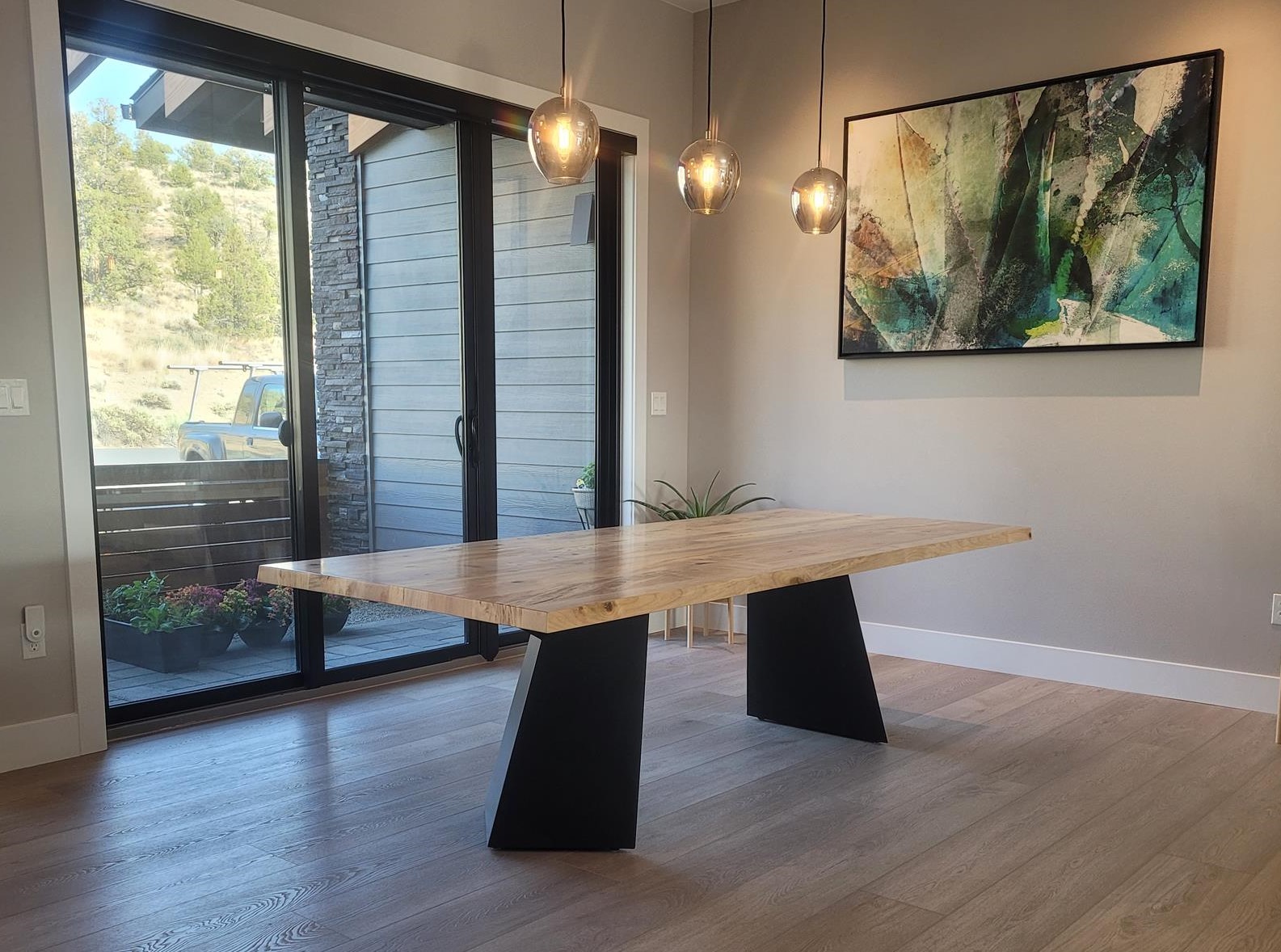The Ultimate Overview to Selecting Sturdy Dining Room Table Legs
The Ultimate Overview to Selecting Sturdy Dining Room Table Legs
Blog Article
A Comprehensive Look at Dining Table Leg Styles: Discovering the Perfect Suit
Choosing the appropriate dining table leg design is crucial for both aesthetic appeal and useful functionality. Standard four legs provide ageless beauty and security, while the pedestal base gives enhanced legroom and a modern-day appearance. For those with larger tables, trestle legs ensure tough assistance, whereas hairpin legs present a mid-century modern-day ambiance with their minimalist layout. The x-shaped legs mix modern design with boosted security. Each of these choices brings one-of-a-kind advantages, making the selection a lot more than simply an issue of preference. Discover better to uncover which style perfectly complements your dining space and way of living.
Traditional Four Legs
Amongst the various types of dining table leg designs, the conventional four-leg design remains a classic choice for lots of houses. Four legs give well balanced assistance, guaranteeing the table stays secure and capable of bearing substantial weight (dining room table legs).
From a visual point of view, the standard four-leg layout can be easily adapted to different indoor styles. Whether crafted from wood, metal, or a mix of products, these legs can be delicately carved, sleek and minimalistic, or anything in between. Their versatility enables them to match both rustic and contemporary settings flawlessly.
Additionally, the uncomplicated structure of the four-leg layout assists in convenience of motion and positioning within an area. Unlike more complex bases, this design minimizes blockages, providing ample legroom for restaurants. In summary, the traditional four-leg dining table leg style weds withstanding style with practical capability, making it a sharp choice for those looking for both type and function in their dining furnishings.
Stand Base
Frequently commemorated for its elegant and space-efficient design, the stand base is a distinguished alternative to the typical four-leg arrangement in eating table leg designs. Without edge legs, diners are afforded higher flexibility of activity, making it an ideal choice for round and oval tables that promote more intimate and comprehensive events.
The central column itself offers a canvas for detailed styles and artistic expressions, including an aspect of visual passion underneath the table. In summary, the stand base integrates functionality with design, making it a refined and sensible choice for diverse eating environments.
Trestle Legs
Trestle legs give a robust and timeless structure for dining tables, defined by their horizontal cross-bracing and strong support light beams. Originating from middle ages times, this style has actually developed yet retained its necessary structure, making it a seasonal favorite in both typical and contemporary setups. The central trestle light beam, frequently sustained by two or even more upright messages, supplies extraordinary security, permitting bigger table sizes without the requirement for added legs.
A significant benefit of trestle leg tables is the enough legroom they provide. Unlike tables with 4 edge legs, the absence of blockages at the table's sides provides unobstructed room for chairs and diners, improving convenience and accessibility. This makes trestle tables optimal for suiting larger events, whether in an eating area or a banquet hall.
The aesthetic adaptability of trestle legs is significant. Available in a variety of materials such as wood, steel, and composite, they can be ended up to enhance a wide variety of indoor styles. From rustic farmhouse to sleek modern styles, trestle legs can be tailored to match individual tastes. Their see this website enduring appeal and practical benefits make trestle legs an engaging option for those looking for both design and usefulness in their table.
Hairpin Legs

The allure of hairpin legs hinges on their simpleness and flexibility - dining room table legs. Offered in an array of materials, consisting of steel and brass, they can be ended up in numerous colors to match various interior styles. Whether matched with a rustic wood table top or a contemporary glass surface, hairpin legs easily mix capability with a touch of vintage charm
Toughness is another noteworthy function of barrette legs. Regardless of their fragile look, these legs are engineered to bear substantial weight, guaranteeing the table stays steady and safe. In addition, they are reasonably easy to install, making them a popular choice for DIY lovers and expert furniture makers alike.
X-Shaped Legs

Created from materials such as steel, wood, or a mix of both, X-shaped legs can be tailored to match different layout preferences. Steel legs usually lend a smooth and commercial feel, suitable for loft-style homes and modern dining rooms. On the other hand, wooden X-shaped legs supply a warmer, more rustic charm, ideal for farmhouse or diverse interiors. The adaptability in products allows property owners to tailor their table to better fit their general layout scheme.
Furthermore, the engineering behind X-shaped legs makes sure also weight circulation, minimizing the risk of wobbling and enhancing durability. This makes them particularly find more well-suited for larger dining tables that require additional support. Basically, X-shaped legs blend practical engineering with modern appearances, making them a classic selection for varied eating atmospheres.
Conclusion
A thorough understanding of eating table leg designs reveals the unique attributes and benefits of each style. Conventional four legs offer security and classic company website charm, while pedestal bases provide legroom and a streamlined appearance. Trestle legs guarantee robust assistance for bigger tables, and hairpin legs introduce a mid-century modern-day visual. X-shaped legs incorporate contemporary design with boosted security. Choosing the appropriate leg design makes certain both useful and aesthetic complete satisfaction in any eating area.
Report this page